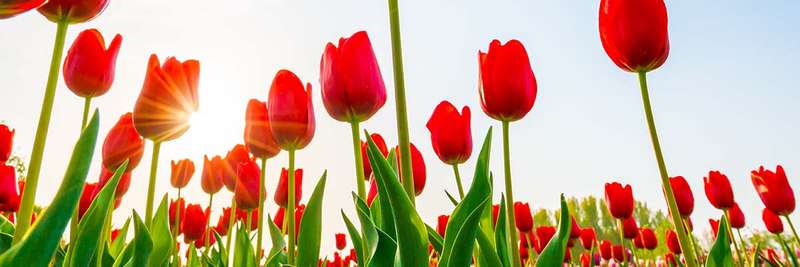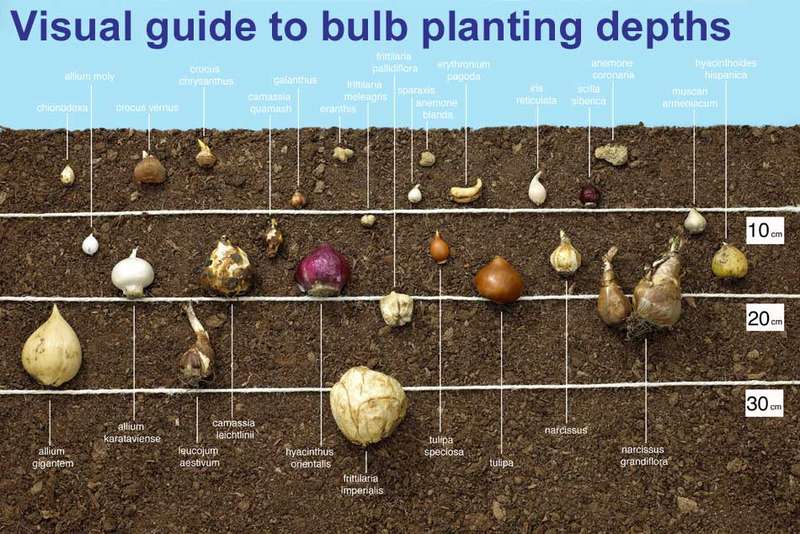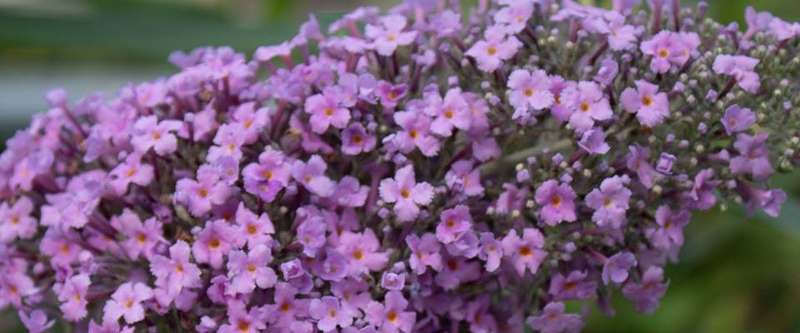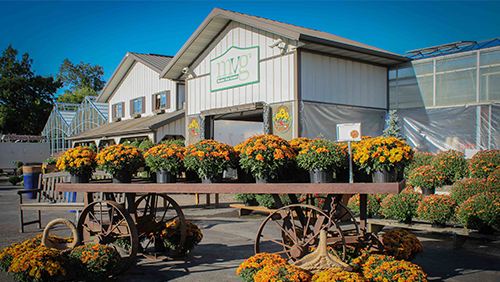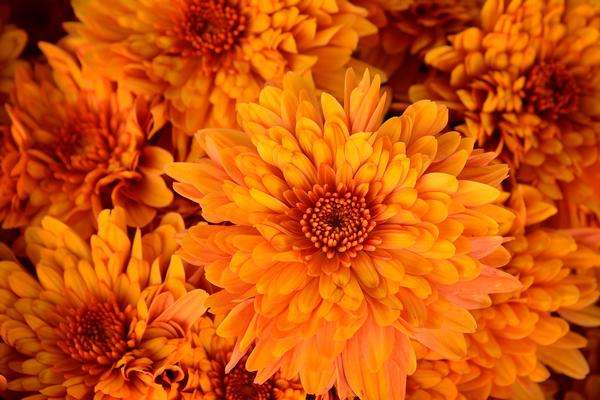New to planting bulbs? Need helpful guidance and tips to ensure beautiful blooms? Learn more here.
What are fall planting bulbs?
Fall planting bulbs are plant species that need to be planted in the ground in the fall before the first hard frost. Bulbs such as tulips, daffodils, narcissus, hyacinths, iris, allium, fritillaria, and scilla require a cold period in order to form roots, and based on lighting and warmth conditions will bloom in the spring.
What is a healthy happy bulb?
Look for bulbs that are firm. Bulbs that are mushy usually have not been kept in a cool dry place and will rot, and therefore, not flower. When it comes to bulbs, bigger is not necessarily better. The bigger the bulb, the more blooms you get and the larger they will be. If you thrive for blankets of spring flowers, you will want smaller bulbs. Bulbs will grow larger in the ground after blooming.
When should fall bulbs be planted?
Fall bulbs must be planted in the fall before the first hard frost. It is best to wait until the outside temperature does not reach 65 degrees anymore. If there is a hard frost in the first couple weeks after planting, mulch your beds and remove in the spring. Light morning frosts will not hurt the bulbs. We are in zone 5B which means our first frost is expected around October 15th.
Though our Fall Frost Free Date is usually set for October 15th, farmer’s almanac is saying we won’t get hard frosts till November this year. Please keep a watch on the weather or MVG’s social media. We will keep you updated.
How to store the fall bulbs until planting time?
Store them away from sunlight in a cool, dry basement, cellar, garage or shed at 60° to 65°F. Avoid temperatures below 50° or above 70°F unless different instructions are given for a particular bulb.
How deep should I plant my fall bulbs?
The basic rule of thumb is that the hole should be at least three times as deep as the height of the bulb. Use the chart below for the required planting depth of your bulbs. It is better to plant the bulb deeper than to shallow. The packaging on each bulbs provides a variety of specific guidelines and planting tips.
How late can I plant my bulbs?
Some MVG employees have had good luck planting their bulbs even after the snowfall. The key is making sure the ground is soft enough to plant. If planting after the first snowfall, even if there is not snow on the ground, please make sure to mulch their newly planted bulbs.
Oops! I forgot to plant my bulbs this fall. What should I do?
Fall bulbs really need to be planted within 6 months of purchase. Bulbs are dormant, but still very much a living product that need the right balance of water and soil. Leaving bulbs out of the ground for too long will cause them to lose their hydration and die. If your ground is frozen in December for example, try to wait for a thaw or break in the weather and plant them a little deeper than normal. If this seems an unlikely scenario, plant your bulbs in pots, place them in a cool (not freezing) dark place and water sparingly throughout the winter. When the ground thaws in the spring, you can place the pots in the ground or on your patio. As a last resort you can plant the bulbs in the spring when the ground thaws, but do not expect many flowers that spring. Feed with bulb care fertilizer and you should have better results next spring.
It is not even spring, and my bulbs are coming up, what should I do?
There is nothing you can do, if the weather is unusually warm some bulbs will be confused and start to sprout. The good news is that this means that your bulbs have a good root foundation. Most bulbs are resilient and will bloom again in the spring.
Why can’t I plant fall bulbs in the spring?
Bulbs require a minimum cold period of 6 weeks to form roots. If you plant bulbs in the spring, they will not have sufficient cold weeks to grow their roots. It also means that the bulbs have been dormant for over 9 months. This long period of dormancy will also affect bulb performance. This is different than our potted bulbs we sell in the spring. Those are “forced” bulbs and can be planted after they flower in the spring.
What can I do to prevent deer, rodents, rabbits and other animals from eating my bulbs and flowers?
The best remedy for preventing animals from eating your bulbs is to plant bulbs they do not like to eat. While you can spray them with soap, pepper, or a chemical, this tends to wash off after the first rainfall and can be time consuming. Here is a list of bulbs that deer, rabbits, and other rodents do not like to eat: Daffodils, Narcissus, Hyacinths, Allium (all types), Crocus, & Snowdrops. You can also lay chicken wire over the planted bulbs, but under the mulch, to discourage digging by dogs, cats, and rodents.
What type of fertilizer should I use?
Bone meal (Purchase Online: Espoma Bone Meal) is the recommend soil amendment for bulbs. Bone meal adds Nitrogen and Phosphorus to the soil. Unlike blood meal, bone meal won’t burn your plants if you add too much. The idea is to mix the bone meal into the soil below where the bulbs will be planted so it can be used by the newly-emerging roots. Mix 1 teaspoon of Bone Meal into the soil per bulb. If your plant’s already in the ground, sprinkle the bone meal on top and then rake over the soil to mix it in. After applying, lightly water the soil so the bone meal can start breaking down.
What is the right pH level of soil for bulbs?
More important than a fertilizer, is to make sure the pH level of your soil is correct. Having the right pH level in your soil is important to bring out the true flower color. The ideal pH level for bulbs is between 6 and 7. MVG sell pH level kits and sensors in the Service building and are a fabulous investment for your garden.
What do I do after my fall planting bulbs have bloomed in the spring?
Let the leaves die down naturally; do not cut them off or mow over them. After bulbs have bloomed, it is important to let them rest because during this period. The bulb is gathering nutrients from the soil and spent flower with the energy put into growing so that it can bloom again next year.
MVG products for better blooms?
• Deluxe Stainless Steel Soil Knife: Soil Knifes make planting bulbs a snap! Simply slice it into the soil to the depth you want, rock it back to open a hole, drop in the 1 tsp of bone meal, drop in the bulb, slide the blade out and close the hole up again.
• Bone Meal: Helps create strong healthy roots and fixes the pH balance of your soil
• PH Test Kits: The ideal pH level for bulbs is between 6 and 7. If the pH is below 7, they will want to add bone meal. If it is above 7 they will want to add sulfur.
• Mulch: Mulching the newly planted bulbs not only will protect the newly planted bulbs from our potentially early hard frosts, but will also help keep weeds at a minimum and keeps your beds looking maintained.
Brought to you by: The Netherland Bulb Company
For more information give us a call a 937-845-0093 or ask a question here.

